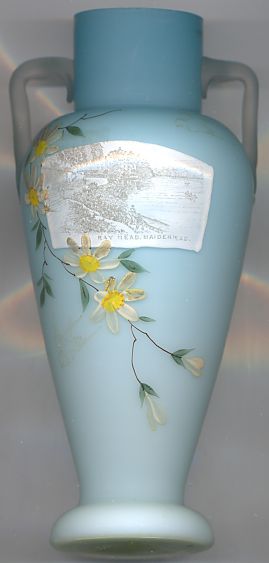

|
| UNITED KINGDOM OF GREAT BRITAIN AND NORTHERN IRELAND |
| England |
| Region: South East England |
| Unitary Authority: Royal Borough of Windsor and Maidenhead – Ceremonial County: Berkshire |
 Maidenhead is situated at an elevation of 31 m on the west bank of the river Thames in Berkshire, England.
The town is part of the Royal Borrough of Maidenhead and WIndsor and has a population of about 60,000.
Maidenhead is situated at an elevation of 31 m on the west bank of the river Thames in Berkshire, England.
The town is part of the Royal Borrough of Maidenhead and WIndsor and has a population of about 60,000.
Maidenhead is recorded in the Domesday Book, a census conducted in the 11th century by William the Conqueror, under the name of Ellington in the hundred of Beynhurst; the modern town of Maidenhead, however, originates from South Ellington. The busiest part of the district was along the River Thames near the Great Hill of Taplow, ideal for both trade and access to the sea. This Hill was known to the Celts as the Mai Dun, and its corresponding wharf as the Mai Dun Hythe. It is from this wharf that the area became known as Maidenhuth, eventually superseding the name South Ellington. In 1280 a bridge was erected across the river to replace the ferry and the Great Western Road was diverted in order to make use of it. This led to the growth of Maidenhead as it became a stopping point for coaches on the journeys between London and Bath. The current Maidenhead Bridge, a local landmark, dates from 1777. King Charles I met his children for the last time before his execution in 1649 at the Greyhound Inn.
A significant river resort in the 19th century, Maidenhead was notably ridiculed in ‘Three Men in a Boat’ by Jerome K. Jerome: “Maidenhead itself is too snobby to be pleasant. It is the haunt of the river swell and his overdressed female companion. It is the town of showy hotels, patronised chiefly by dudes and ballet girls. It is the witch’s kitchen from which go forth those demons of the river – steam-launches. The LONDON JOURNAL duke always has his ‘little place’ at Maidenhead; and the heroine of the three-volume novel always dines there when she goes out on the spree with somebody else’s husband.”
The first stretch of line of the Great Western Railroad, from London Paddington to Taplow near Maidenhead, opened in 1838. The Maidenhead Railway Bridge across the Thames, designed by Great Western’s famous engineer, Isambard Kingdom Brunel, at the time of its construction (1838) had the world’s widest and flattest spans (39 m with a rise of only 7 m) for a brick arch bridge. Maidenhead Railway Bridge features in “Rain, Steam and Speed – The Great Western Railway”, painted by Joseph Mallord William Turner in 1844 and now in the National Gallery, London.
The picture on item no. 2084 [left] shows  Ray Mead.
Ray Mead.
[Texts adapted from http://en.wikipedia.org/wiki/Maidenhead, http://www.authorama.com/three-men-in-a-boat-12.html, http://en.wikipedia.org/wiki/Maidenhead_Railway_Bridge, http://www.rbwm.gov.uk/community_living/parks_ray-mill-island.htm]
![[scale]](lineal.jpg)